Note: apparently, I may have included too many pretty photos in this post, so if the post cuts off for you at some point, just click the button that says View Entire Post.
One of the most magical things in Narni is that the whole old city is so beautifully preserved. Step out on the street, and it feels like you’ve gone back in time—several centuries. And never is this timeless feeling stronger than during Narni’s city festival, the Corsa all’Anello, or Ring Race, one of the most important Medieval festivals in Italy.
The festival is an action-packed three weeks of all kinds of processions, spectacles, artisan workshops, ceremonies, and equestrian competitions. It honours Saint Juvenal, the patron saint of Narni. He was the first bishop of Narni—in the fourth century—and saved the city from invaders by calling down a divine thunderstorm.
A thousand years later, the city fathers of Narni codified the rituals of the festival in the statutes of 1371. Six hundred years after that, the modern version of the festivities was re-inaugurated in 1969, based on exhaustive historical research. So we're in the 57th year of the revivified Corsa all’Anello.
This is what makes the timelessness of Italy feel so much deeper than the surface-level built environment. History lives on not only in architecture, but in customs and rituals, food, language, and even the people. In one palazzo in Narni, the noble family that built the palazzo and lived there in 1371 is still living there today. In honour of the festival, they hang a banner with their family coat of arms from their little balcony garden.
Due to our son’s accident last year, we haven’t been back to Italy since October. So it was especially meaningful that the stars aligned for us to be there for the city festival this year. After several very difficult months getting him on the road to recovery, I was in desperate need of some magic. And what better place to find magic than in Narni?
The Corsa all’Anello is a competition between the different parts of the city. Narni is divided into three terzieri—basically, the quarters of the city, but rather than quarters, they’re thirds, hence the name terziere. When we bought our house last year, we found out that it belonged to Terziere Mezule, the maze-like upper portion of the city that winds up from Piazza Garibaldi to La Rocca, the imposing fortress on the hill.
Each terziere has its own symbol and colours. Mezule’s is a tower that looks like the rook in chess, and our colours are black and white. I’ve been dying to get a flag to hang out our window, as everyone does, so one of our first stops this trip was to the Mezule swag shop just down the hill. But they didn’t make the banners this year!
I’ll have to sew my own, or find someone on Etsy who can do one for me. If you look closely, it’s obvious a lot of them are homemade, and people have done them in various styles which I think adds so much to the charm. To console ourselves, we bought T-shirts and bracelets and sweatshirts to show our Mezule patriotism. Even Lyra got her own little scarf. She’s a Mezule doggie through and through.
Apparently, you can even go so far as to be “baptized” into your terziere. Believe me, I was tempted! Even though I’m not the sort of person who normally gets very partisan about football or things like that. Unfortunately, the baptism ceremony was rained out the day we left, so we’ll have to wait for another year to see it, let alone partake.
When we came to Narni last year to tidy our new house and make it somewhere our grown-up children will not mind visiting, we popped into Narni’s Museo Multimedivale (an Italian portmanteau of multimedia and Medieval). It’s the closest thing to experiencing the Corsa all’Anello if you happen to be in Narni outside of festival time and want to learn the history.
But no matter how much you learn beforehand, the real thing is even better! We could barely step out of the house without encountering a Medieval procession on its way to somewhere or other. One of our first evenings here, we were having an aperitivo in Piazza dei Priori with friends, and the Offerta dei Ceri procession passed right by us. They carried the banners of the noble houses of Narni (in the fourteenth century), and were on their way to the Cathedral to present truly massive candles as offerings to the Bishop. The bigger the candle, the more important. I can’t imagine how long these things might burn.

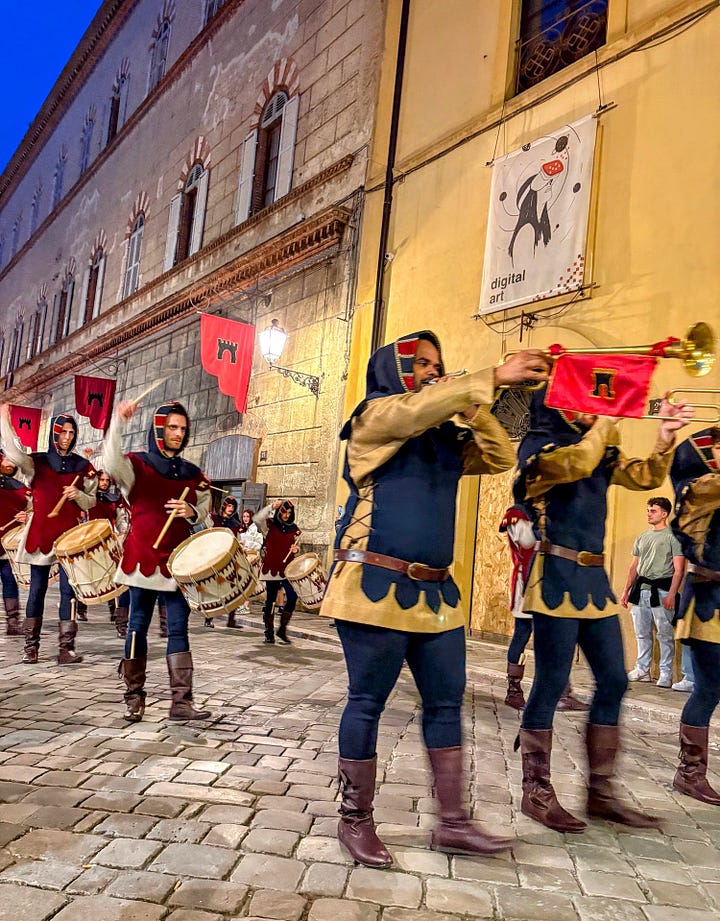
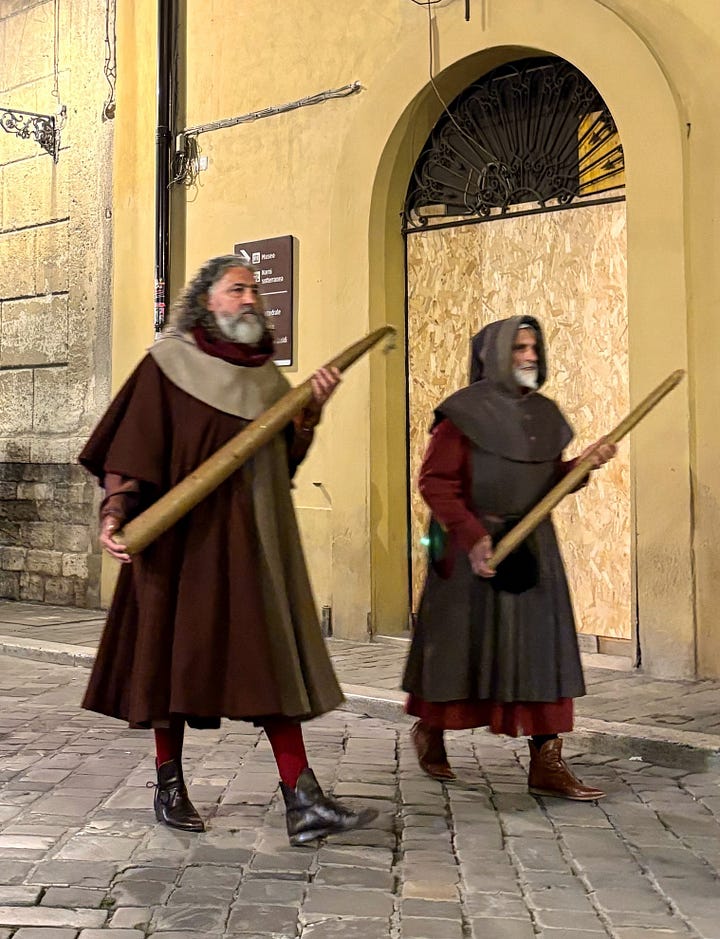
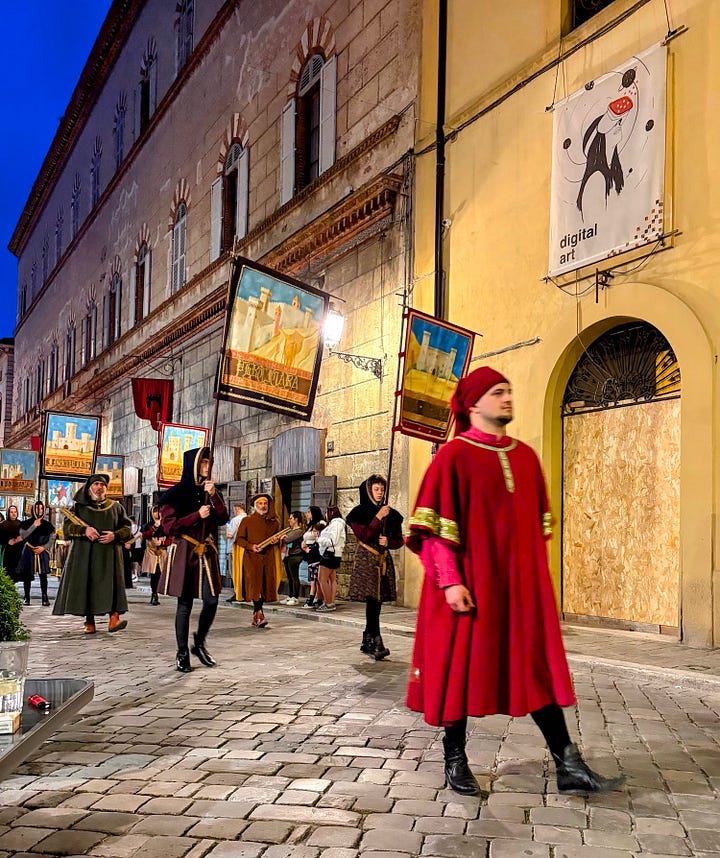
The heart of the Corsa all’Anello is a series of mounted games where knights must run Medieval lances through a ring that gets smaller as the games progress. The festival is three weeks long, and we were there for the middle week, so we are missing the grand finale, which is the modern ring race, held in a special purpose-built stadium outside the city.
However, we did attend the reenactment of the original Medieval equestrian games, held right in the main square of Narni. They put down sand over the cobblestones for the horses, and marked off the course with wooden barriers.
Each terziere sends a few “knights” to compete in the games. They spend a good portion of the rest of the year training for this. A groom dressed in the colours of the terziere leads the mounted knight to the start of the course.
The knight heads off at full tilt.
Meanwhile, a race official has hung an orange ring from what looks like a small wooden gallows. It starts with a ring about ten centimetres wide, which is already very small to put a lance through! As the competition progresses, the ring is replaced with smaller and smaller versions, until it gets to the smallest, three centimetres, which barely fits around the very tip of the lance.
While at full gallop, the knight must manage to get the lance through that tiny ring.
(The ring is orange. You can just barely see it at the end of the rope if you zoom in. And you can also see that the rider is about to succeed!)
I’m flabbergasted that this is even possible, and even more by the fact that the youngest of the knights was a teenager.
As you can see in the photo, all us commoners in modern clothing watch from one side of the course, while the great and good of Medieval Narni sit on the other side, dressed in their finery. And of course, anyone with a window that looks out on the piazza has an excellent view from above.
It was truly unforgettable to be in Narni for the Corsa all’Anello, and see how the whole city pulls together to make it happen. Pretty much everything is done on a volunteer basis, and people take time off work to participate. I guess it feels a little like the solidarity and community spirit you might see when a city suffers some kind of disaster. But in this case, people are coming together for a very different reason: a joyous celebration, repeated every year.
Want to read about more of my favourite things in Narni? Try this post:








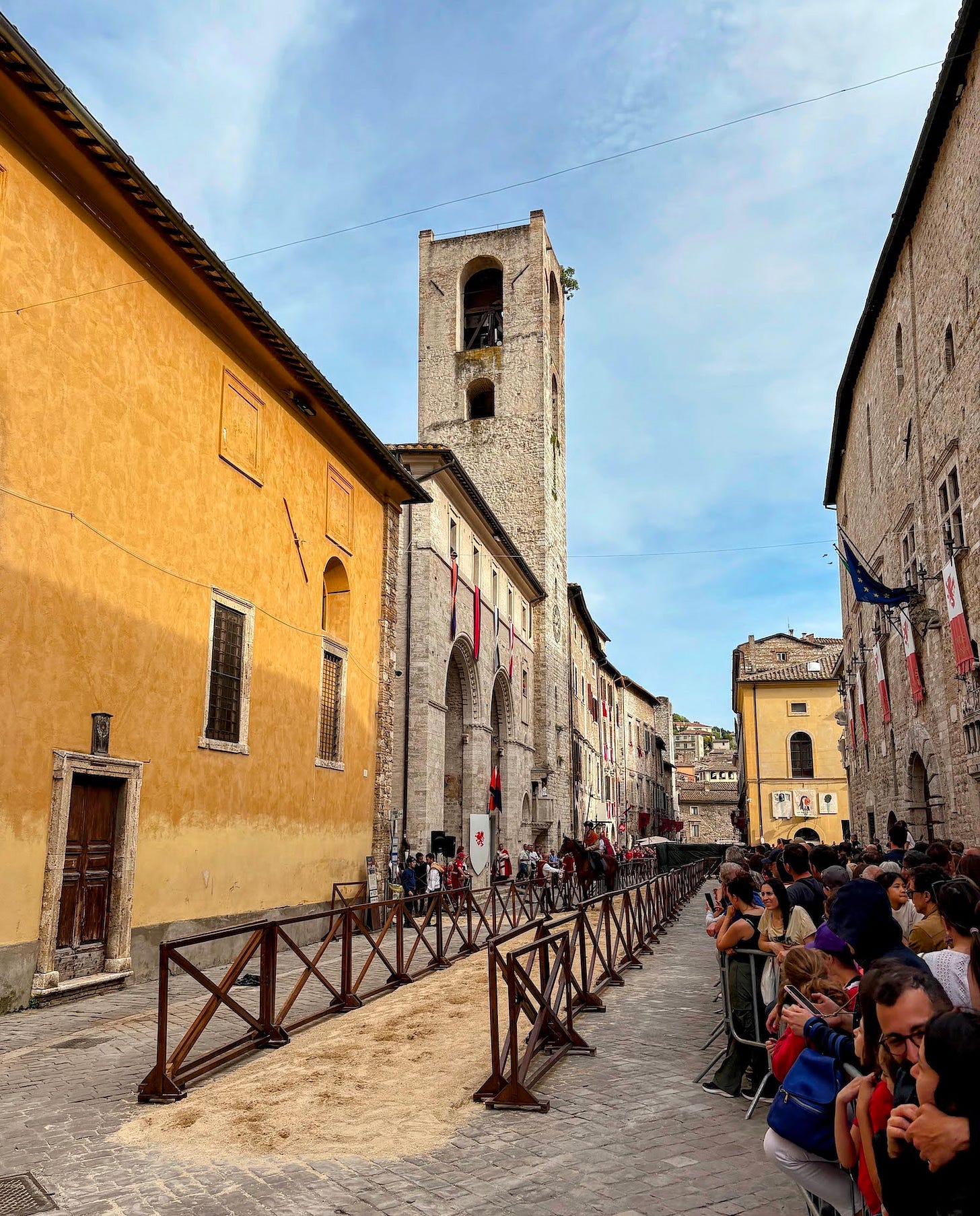
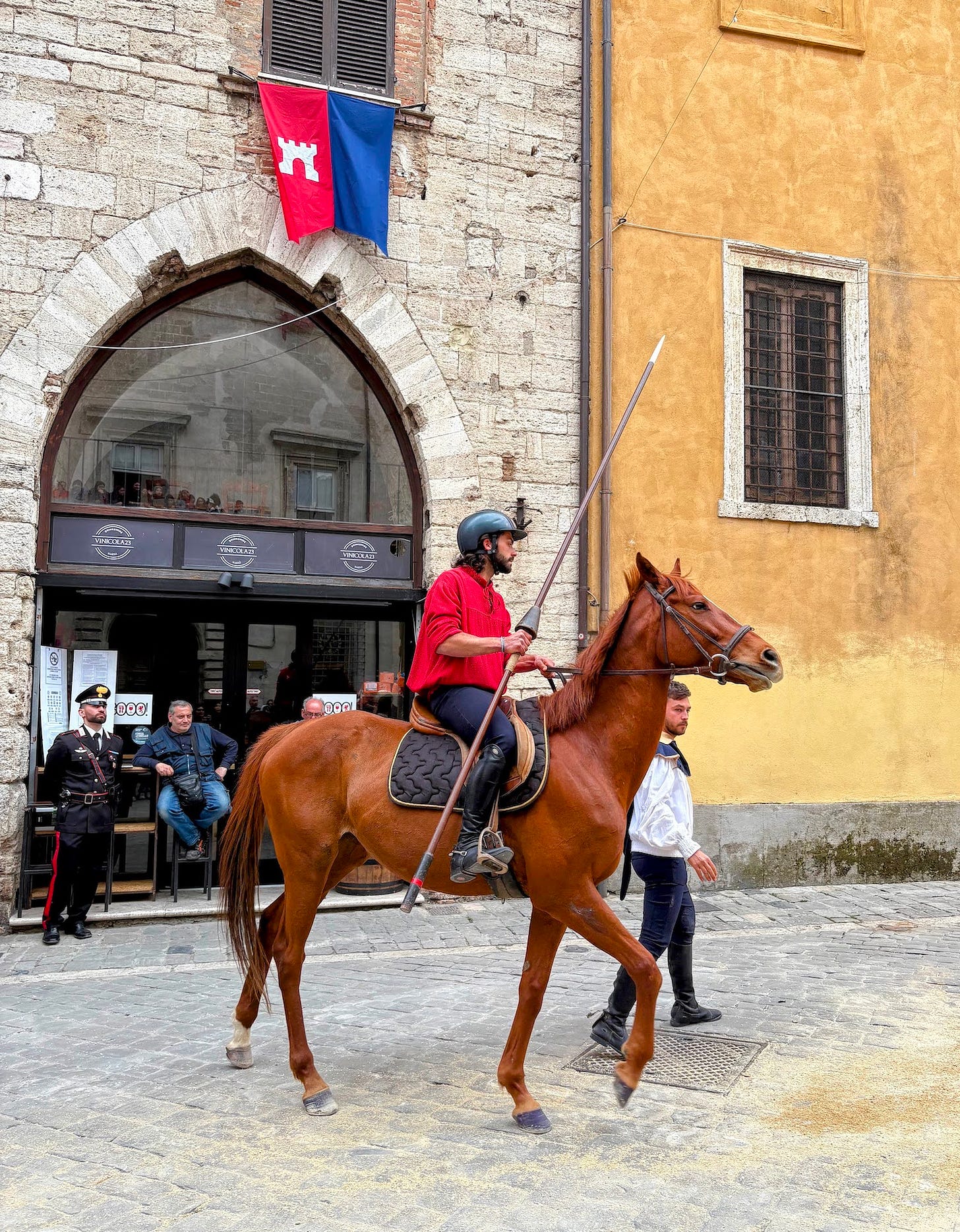

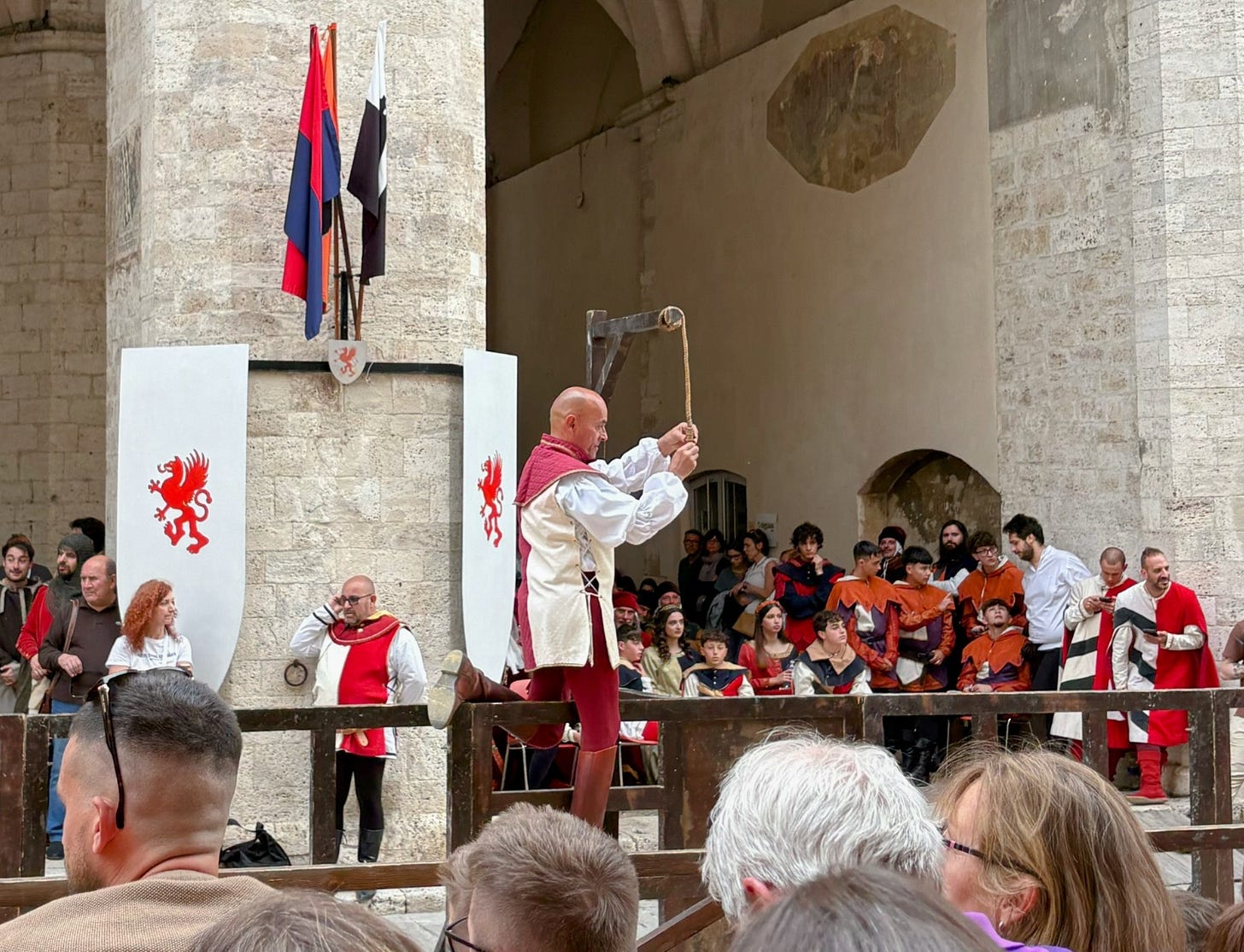


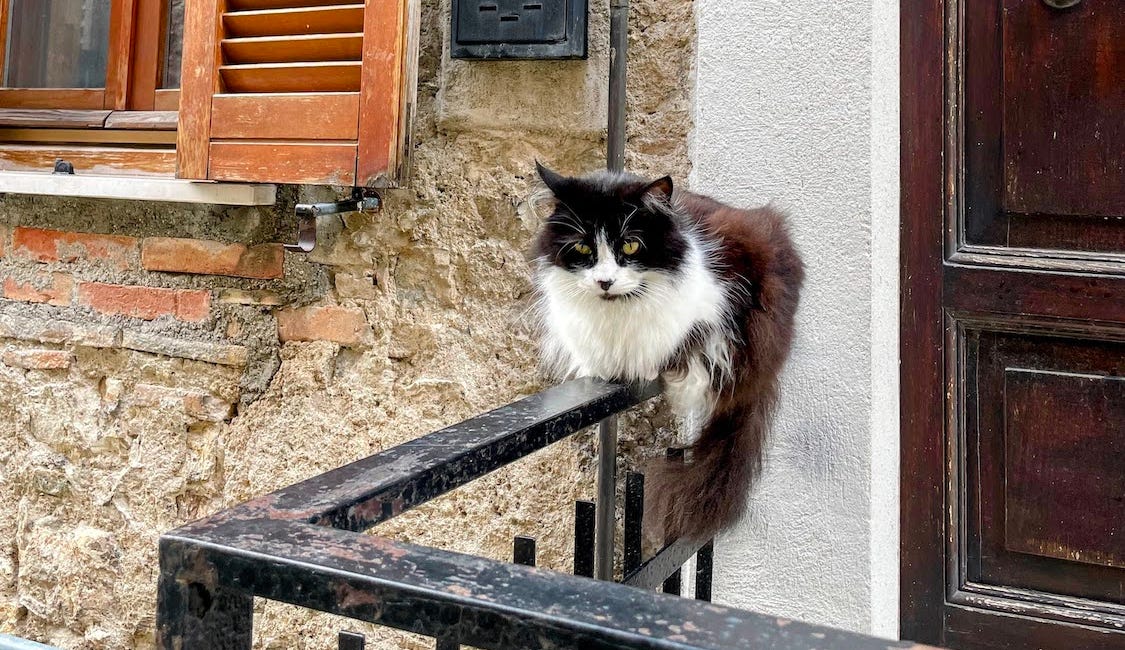
Wonderful story. We came upon Narni a bit by chance one day on our way up to our house in Le Marche, and loved it-- I was really hoping to make it there for this festival. Next year!
Thank you so much for sharing! I love that the foundations and families of Narni are still joined by the lanced rings, and much more, through to this modern era. Can't wait to visit!